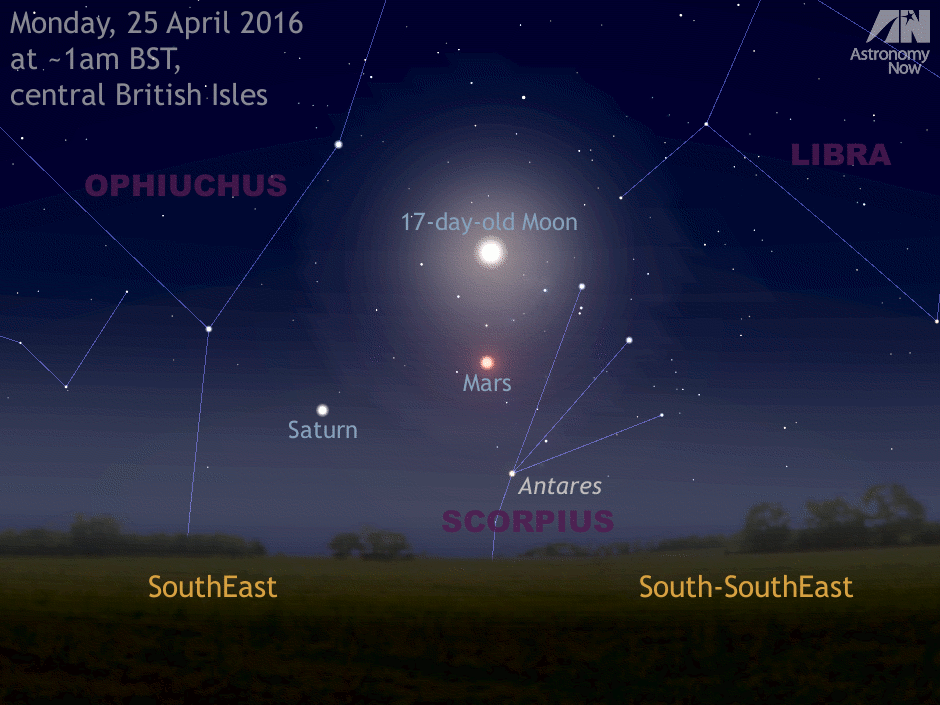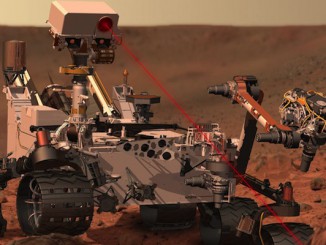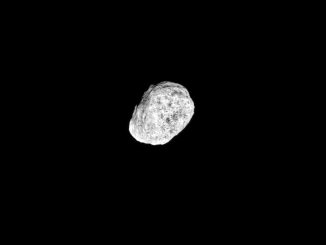
A convenient celestial guide in the form of the Moon helps highlight the two planets an hour after midnight on 25 and 26 April. At 1am BST on Monday the 25th, the 17-day-old Moon lies within five degrees above the Red Planet, so the pair can be seen within the same field of view of most binoculars. At 1am BST on Tuesday the 26th, the waning gibbous Moon can be found within four degrees to the upper left of Saturn. Don’t overlook first-magnitude star Antares in Scorpius, currently some five degrees below Mars.
Since Mars and Saturn have declinations close to -21 degrees, neither will get particularly high in the southern sky at their best. However, don’t let that discourage you from taking a look at them with a telescope in the small hours — particularly on slightly misty nights or when a high-pressure weather system sits over the UK, as the seeing conditions can often still be very good. A light yellow filter may sharpen the view too.
On 25 and 26 April, Mars has a 97 percent illuminated disc exceeding 15 arcseconds in angular size, meaning that a telescope magnifying 120x will enlarge it to the same size as the nearby Moon appears to the unaided eye. Mars is 57 million miles (92 million kilometres) distant at this time. Saturn, sporting a somewhat larger disc at 18 arcseconds across and glorious open rings spanning 41 arcseconds, currently lies almost exactly 15 times further away than the Red Planet.
Inside the magazine
Find out all you need to know about observing Mars at opposition and the other solar system bodies currently in the night sky in the May 2016 edition of Astronomy Now.
Never miss an issue by subscribing to the UK’s biggest astronomy magazine. Also available for iPad/iPhone and Android devices.




